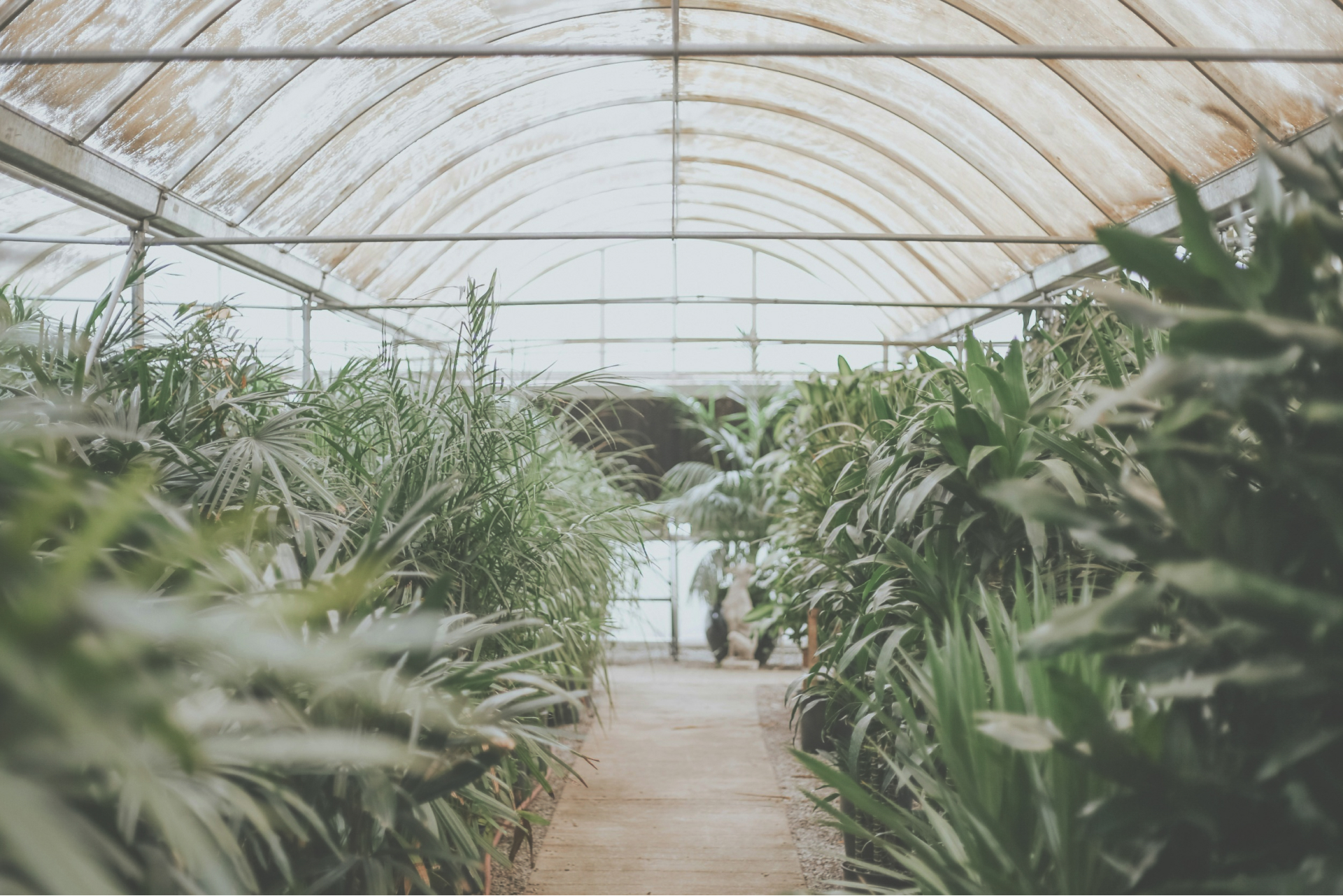Everything you need to know about LED diodes and how to compare them

In the world of indoor cannabis Cultivation, the right choice of Lighting can make the difference between a mediocre yield and a championship harvest. LEDs have become a popular choice thanks to their energy efficiency, long lifespan and ability to offer an adjustable light spectrum. In this article, we’ll explore everything you need to know about these types of diodes, from how they work and the different types available, to how to compare them in terms of efficiency, light spectrum and operating costs.
An LED diode, whose acronym stands for Light Emitting Diode, is a semiconductor device that converts electrical energy into light when electricity flows in a specific direction, from the anode (positive side) to the cathode (negative side). Basically, LED diodes are like small light Bulbs, only they are capable of producing high light output with significantly lower power consumption, which makes them have a much longer lifetime. In addition, because they do not have filaments that can burn out, they are more resistant to shock and vibration, which further increases their durability.
How does an LED emit light?
Light-emitting diodes work because of the electroluminescence properties of semiconductor materials, the phenomenon whereby a material emits light in response to an electric current. Semiconductor materials in LEDs can be “doped,” which refers to the process of adding small amounts of impurities to a pure semiconductor material to modify its electrical properties, such as its conductivity.
Thus, an LED diode is composed of a very thin layer of doped semiconductor material. Depending on the type of semiconductor material used and the amount of doping, when the diode is directly biased (i.e. when an electric current is applied in the correct direction), the electrons and holes in the semiconductor recombine. This recombination releases energy in the form of photons, which are the elementary particles of light. The wavelength of the emitted light, and therefore its color, depends on the specific semiconductor material and the doping level.
For example, materials such as gallium nitride (GaN) emit blue light, while gallium phosphide (GaP) can emit green or red light, depending on how it is doped. The ability to adjust the color of light by selecting different materials and doping levels makes LEDs extremely versatile and useful in a wide range of applications, from general lighting to plant cultivation such as cannabis.
Basic components of LED diodes
An LED diode is composed of several components assembled to ensure efficient and long-lasting operation. The heart of the LED is the semiconductor chip, usually made of materials such as gallium arsenide (GaAs), indium phosphide (InP) or silicon carbide (SiC). It is on this chip that the light emission occurs when an electric current is applied.
The housing is the outer structure that protects the semiconductor chip. It can be made of plastic or metal and provides mechanical support and protection against physical and environmental damage, as well as aiding in the dissipation of heat generated by the LED.
A transparent or translucent dome or lens, made of plastic (epoxy) or silicon, is placed over the semiconductor chip. This dome not only protects the chip, but can also focus and direct the emitted light in a specific direction. Surrounding the semiconductor chip is the reflector, a component that also helps direct and focus the light emitted by the chip, increasing the luminous efficiency of the LED.
The semiconductor chip is mounted on a substrate, which can be ceramic, metal or plastic. This substrate provides structural support and aids in the dissipation of heat generated by the chip. Finally, thin metal wires, known as bonding wires, connect the semiconductor chip to the external terminals (anode and cathode), allowing electrical conduction from the terminals to the chip.
Types of LED diodes for cannabis cultivation
There are several types of LEDs, each designed for specific applications and with distinctive characteristics. But it is crucial to understand the different options used in cannabis grow lights:
SMD (Surface-Mounted Device) LEDs are one of the most popular choices in grow lighting. These diodes are mounted directly on the surface of a printed circuit board. SMD LEDs come in various sizes, the most common being SMD 3528 and SMD 5050. For cannabis lighting, SMD 2835 LEDs are also widely used. The number 2835 indicates the dimensions of the LED: 2.8 mm wide by 3.5 mm long.
These LEDs are known for their high efficiency and ability to emit bright light in a compact format with good heat management, allowing a lot of flexibility in luminaire design. If among the product specifications (for example in the Lazerlite range of The Pure Factory) you see that the amount of LEDs indicated is…
1680 X SMD2835, 240 X SMD2835
… This means that there are 1680 surface-mounted LEDs, plus an additional 240, all with dimensions of 2.8 mm x 3.5 mm.
COB (Chip on Board) LEDs represent an advanced technology where multiple LED chips are mounted directly on a single substrate. This creates a single high luminous intensity module. In cannabis cultivation, these LEDs are ideal for areas that require high light penetration, such as in densely dense plants. In addition, their compact design facilitates heat management, which is crucial for maintaining an optimal growing environment.
High Power LEDs are single diodes that can handle higher currents and therefore emit more light than traditional LEDs. These diodes are suitable for applications that require high light intensity in a specific area. However, they tend to generate more heat, which requires an efficient dissipation system. In cannabis cultivation, they are used to provide supplemental light in growing areas that need an extra boost of intense light.
Multi-spectrum LEDs combine several types of diodes in a single luminaire to cover a broad spectrum of light. These LEDs can include chips that emit light in blue, red, white, and even infrared and ultraviolet wavelengths. Multi-spectrum LEDs allow the light spectrum to be adjusted according to the growth phase of the plants, thus optimizing crop yield and quality.
UV and IR (ultraviolet and infrared) LEDs are also used in grow lighting systems to offer specific benefits. UV LEDs can help induce the production of resins and essential oils in cannabis plants, while IR LEDs can enhance light penetration and stimulate root and stem growth. These diodes are used in combination with other types of diodes to provide a full spectrum of light to maximize plant development.
How to compare different types of LED diodes
When comparing different types of LEDs, it is important to consider factors such as luminous efficiency, light distribution, or the possibility of adjusting the spectrum. Each type of diode has its advantages depending on the specific needs of the grower.
-
 Fission LED V2.0200,00 € – 250,00 €
Fission LED V2.0200,00 € – 250,00 €
When we at Pure Factory talk about the LED diodes that are part of a luminaire, such as those in our new Fission range, you can find terms like Sanan, 3000K, 5000K, 660 nm, 395 nm… They refer to different characteristics and technical specifications of the diodes, which affect how and what kind of light they emit. Some of these terms are:
Based on efficiency
Sanan Diodes- Sanan is a brand of diode manufacturer (Sanan Optoelectronics) known for producing high quality, high efficiency LEDs. When it is mentioned that a luminaire uses Sanan diodes, we are indicating the provenance and quality of the LEDs. Compared to other brands, Sanan LEDs are very competitive in terms of energy efficiency and durability.
Samsung LM281B+Pro Diodes- Some of The Pure Factory’s luminaires can also incorporate Samsung LMB281B+Pro diodes, which are a specific type of surface mounted LED diode (SMD) manufactured by Samsung. These diodes are known for producing a large amount of light per watt of power consumed, allowing light output to be maximized while minimizing energy consumption, thus reducing operating costs.
Depending on color temperature
3000K and 5000K- These figures represent the color temperature of LEDs, which is measured in degrees Kelvin (K) and describes the color of the light emitted. For example, 3000K is a warm light, with yellow and orange tones, similar to the light you get during sunset. Meanwhile, 5000K is a neutral white light, which resembles daylight in full sun.
3000K LEDs are ideal for the flowering phase of cannabis, as the warm tones promote flower and fruit development. On the other hand, 5000K LEDs are more suitable for the vegetative phase, providing a more daylight-like light that aids in overall growth.
According to wavelength
660 nm- This value refers to the wavelength of deep red light emitted by the LED, measured in nanometers (nm). Red light at 660 nm is crucial for plant photosynthesis and flowering, making this type of LED essential during the flowering phase.
395 nm- In contrast, this wavelength corresponds to near ultraviolet (UV) light. LEDs that emit light at 395 nm are useful for inducing the production of resins and essential oils in cannabis plants. Exposure to UV light can increase trichome production, improving the potency and quality of the crop.
According to the number of diodes
The specifications provided for a luminaire may include various types of LED diodes, but also in different quantities, which are specified by the term “PCS”. PCS” is an abbreviation for “pieces”, which indicates the number of diodes mounted in the device.
Thus, for example, if the light source carries…
| 3000K | 262PCS |
| 5000K | 132PCS |
| 660nm | 34PCS |
| 395nm | 2PCS |
| 30nm | 2PCS |
…what it indicates is the number of diodes in the different color temperatures and wavelengths that are present in the luminaire. This distribution of LED diode types and the quantity of each creates a light spectrum that combines white light, red light and UV light,
The combination of white and red LEDs results in a relatively high proportion of bluish light. This blue light is critical during the vegetative stage, as it promotes morphogenesis, which is the development of the plant’s structure, ensuring that growth is tight and compact. In addition, blue light enhances light absorption by the plant, optimizing photosynthesis and promoting healthy and vigorous growth.
LED lighting systems at The Pure Factory
Since the LED industry is growing at a rapid pace, it is crucial to understand the differences between the various types of diodes available on the market, so growers can make informed decisions that will benefit both their plants and their wallets in the long run.
This understanding is especially important in cannabis cultivation, where the choice of lighting can significantly affect the quality and quantity of the harvest. LEDs vary in price, and while it may be tempting to opt for cheaper options, it is important to remember that “you get what you pay for.” That’s why value for money should be a key consideration in this decision.
In our LED product catalog, we offer not only the best diode brands and color temperatures, carefully selected to guarantee maximum efficiency and durability, but also the most competitive prices in the market. Our extensive experience has taught us the importance of quality manufacturing and the right combination of LEDs to meet the specific needs of all types of growers.

No comments